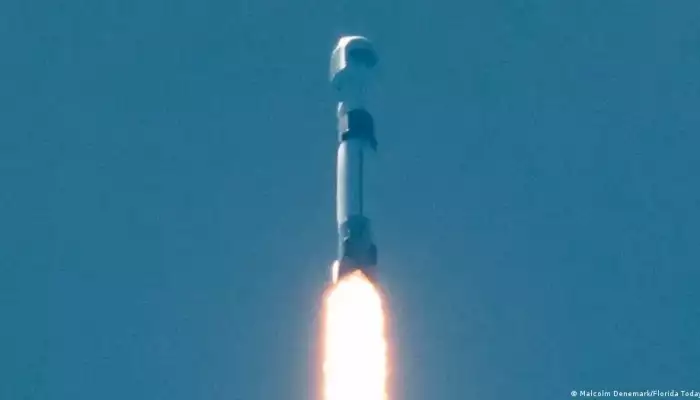
The European Space Agency’s Euclid space telescope lifted off aboard a SpaceX rocket from Florida on Saturday.
The telescope, which successfully separated from the rocket about an hour after the launch, is set to explore the "dark" or unknown realms of the universe.
Flight controllers in Germany declared success less than an hour into the flight, applauding and shouting "Yes" after they received a signal from the telescope after it separated from the rocket.
"I'm so thrilled, I'm so excited to see now this mission up in space, knowing it is on its way," the European Space Agecy Director General Josef Aschbacher said from the launch site in Florida.
The Euclid telescope now sets off on a monthlong journey to its destination, known as the second Lagrange point (L2) of the solar orbit, where gravity from the sun and Earth balance the orbital motion of a satellite.
There are five so-called "Lagrange Points," according to NASA. L2 is nearly 1 million miles (1.6 million kilometers) away from Earth.
From L2, the telescope will survey galaxies as far away as 10 billion light years from Earth across an immense expanse of the sky beyond our own Milky Way galaxy.
The spacecraft, which weighs 2 tons, is also equipped with instruments designed to measure the intensity and spectrums of infrared light from those galaxies in a way that will precisely determine their distances.
Why exploring the "dark" side of the universe matters
The telescope is set to produce the largest and the most accurate map of the universe so far, including the distribution of galaxies spanning the last 10 billion years of cosmic time, explained Elsa Montagnon, the head of Mission Operations Division at NASA.
That gives scientists the ability to comprehensively study the evolution and composition of the universe, Montagnon added during a live broadcast of the launch.
The Euclid mission is set to unravel the mysteries of the dark energy, which together with dark matter comprises 95% of the cosmos, Montagnon said.
Visible stars and galaxies make up less than 5% of the universe, and the Euclid will allow scientists to study the universe as it is.
What to know about dark energy and dark matter
There are two highly important instruments within the telescope that will take images to allow scientists to study the two foundational components of the universe.
One is dark matter, which is an invisible form of matter that makes up most of the universe's mass and creates its underlying structure. Dark matter's gravity drives normal matter (gas and dust) to collect and build up into stars and galaxies.
The other is dark energy, an equally enigmatic force believed to explain the universe's expansion.
Other than that, dark energy is a complete mystery to scientists.
Roughly 68% of the universe is dark energy, while dark matter makes up about 27%. The rest, or everything else ever observed on Earth, adds up to less than 5% of the universe.